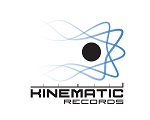| Author
|
Scales - basic questions
|
willsanquil
IsraTrance Full Member

Started Topics :
93
Posts :
2822
Posted : May 11, 2010 01:17
|
ok yeah that...is confusing.
I thought that a scale was just a defined pattern of half step/whole step in relation to the root key...
like a major scale's pattern was the same for each note along the piano, as is ionian phrygian etc.. like so:
* - same scale
2-1-2-2-1-2-2 - aeolian
2-2-1-2-2-2-1 - major*
2-2-1-2-2-2-1 - ionian*
1-2-2-2-1-2-2 - phrygian
2-2-1-2-2-1-2 - mixolydian
I'm reading your post over and over again and I still don't really understand it at all, I mean i get that the CDEFGAB is the C major scale, but each of those individual keys can be in each of the scales you mentioned?
Or are you talking about how you go about mixing scales in a complementary way, as in which can be played alongside each other?
        If you want to make an apple pie from scratch...you must first invent the universe If you want to make an apple pie from scratch...you must first invent the universe
www.soundcloud.com/tasp
www.soundcloud.com/kinematic-records |

|
|
orgytime
IsraTrance Full Member

Started Topics :
120
Posts :
1703
Posted : May 11, 2010 01:41
|
hehe wait, thats the key:
C-ionian (major)
D-dorian
E-phrygian
F-lydian
G-mixolydian
A-aeolian (minor)
B-locrian
or
[2]212221
[C]DEFGAB ionian (major scale)
.........
[D]EFGABC dorian
.........
[E]FGABCD phrygian
.........
[F]GABCDE lydian
.........
[G]ABCDEF mixolydian
.........
[A]BCDEFG aeolian
.........
[B]CDEFGA lokrian
sure you can write this in half- and whole-steps if you like, but as how i wrote it, you see, that every scale fits at the white notes on your piano. every scale of those i mentioned above fitts in C-major.
lets say i play over a bassline wich is playing C-C-C-C-G-G-E-E... how do i know wich scale of those im playing, if every f****** scale gots the same notes.
is it the accent i give (starting- ending points of the phrase/scale)?
and does the bass tell me wich scale i have to play?
for example, C-major bassline swiches its note to a [G]... does this mean i have to play the mixolydian scale now ([G]ABCDEF)?
hopefully you get me now^^
im just talking about arranging a little song with a bass wich playes single notes in the c-major scale.
        www.soundcloud.com/orgytime www.soundcloud.com/orgytime |

|
|
the five assed monkey
IsraTrance Junior Member

Started Topics :
22
Posts :
145
Posted : May 11, 2010 02:26
|
ok i will try to explain that in english..
all this scales ionian, dorian etc.. they r all conected with each other and they r all in that case- the C major scale. so if u play the C-G-E bassline u actualy play C major scale notes. now u can play any of this scales with that bassline only in the positions that u wrote ofcourse. the accent is no matter the notes r. the bass dont tell u wich scale to play the chord progression tell u that. about the feelings its simple. major=happy. minor=sad. hope it will help u people  |

|
|
dj chichke
Chichke

Started Topics :
83
Posts :
705
Posted : May 11, 2010 02:26
|
|
as i see it. the main note of your bassline is the root note of your scale. |

|
|
vipal
IsraTrance Full Member

Started Topics :
123
Posts :
1397
Posted : May 11, 2010 04:36
|
|
as this seems to follow some kind of music-mathematics there must be a plug where you just put your root note and choose a scale. then notes outside this defined note pattern should not be played. gonne check it out in cubase5 now. |

|
|
willsanquil
IsraTrance Full Member

Started Topics :
93
Posts :
2822
Posted : May 11, 2010 04:57
|
there is something like that for ableton - its called "scale" in the MIDI devices, it forces your notes onto a specific scale - there is a great pack of expanded scales from the Covert Operators.
ok - also there are two terms that I see used a lot, which I have no f-in clue what they are:
accent and transient. If someone could illuminate that in english, would be great 
        If you want to make an apple pie from scratch...you must first invent the universe If you want to make an apple pie from scratch...you must first invent the universe
www.soundcloud.com/tasp
www.soundcloud.com/kinematic-records |

|
|
vipal
IsraTrance Full Member

Started Topics :
123
Posts :
1397
Posted : May 11, 2010 05:36
|
Quote:
|
On 2010-05-11 04:36, vipal wrote:
as this seems to follow some kind of music-mathematics there must be a plug where you just put your root note and choose a scale. then notes outside this defined note pattern should not be played. gonne check it out in cubase5 now.
|
|
,
midi modifiers |

|
|
orgytime
IsraTrance Full Member

Started Topics :
120
Posts :
1703
Posted : May 11, 2010 10:35
|
|
Trip-
IsraTrance Team

Started Topics :
101
Posts :
3239
Posted : May 11, 2010 10:50
|
willsanquil,
I'm sorry I have misunderstood you. I supposed you're at the very first stage in this. Maybe I don't understand your question... ;/
Restricting your MIDI editor to a specific scale is simply wrong practice (IMO)... why would anyone do this? I mean, how would one write modulations or introducing odd-notes. Seriously, recognizing a scale on the piano roll should not be that hard.
orgytime:
"the only thing the scales differ is the definition of the rootkey?"
What you call the rootkey is actually the dominant note - dominanta.
And yes, recognizing the dominanta in a given melody can be tricky at times, when you have just the melody playing (depends on how the melody is built - it can guide you). If you play one odd-melody (like a melody without the rules of start-end) with 2 different backup guides with diferent progression, the relation between the notes will strike your brain differently. Both would sound fine.
Remember that music is alot about the dynamics of notes, the progression and the "picture" is visible over a period of one bar or 4 bars etc. It's not just the momental chord strike.
        Crackling universes dive into their own neverending crackle... Crackling universes dive into their own neverending crackle...
AgalactiA |

|
|
orgytime
IsraTrance Full Member

Started Topics :
120
Posts :
1703
Posted : May 11, 2010 11:06
|
hehe ok, i let this info sink in... i think ill contact my guitar-teacher again^^ he knows that shit grrr..
        www.soundcloud.com/orgytime www.soundcloud.com/orgytime |

|
|
willsanquil
IsraTrance Full Member

Started Topics :
93
Posts :
2822
Posted : May 11, 2010 11:36
|
Quote:
|
On 2010-05-11 10:50, Trip- wrote:
willsanquil,
I'm sorry I have misunderstood you. I supposed you're at the very first stage in this. Maybe I don't understand your question... ;/
Restricting your MIDI editor to a specific scale is simply wrong practice (IMO)... why would anyone do this? I mean, how would one write modulations or introducing odd-notes. Seriously, recognizing a scale on the piano roll should not be that hard.
|
|
No worries  I pretty much am at the very beginning of a lifelong journey and unfortunately I have no classical training to fall back on, I have to build from scratch :\ I pretty much am at the very beginning of a lifelong journey and unfortunately I have no classical training to fall back on, I have to build from scratch :\
The reason I restricted my MIDI editor to a specific scale was to save time - and yeah, I guess it shouldn't be hard to identify scales on a piano roll, but imagine for a minute that you're in your mid 20s with 0 knowledge of musical theory/terminology, synthesis, the whole deal and you might see how it could be a bit confusing - for me it was an incredibly tedious process of counting out the steps or alt-tabbing back and forth between my DAW and a site with the scale on it, so I figured I would just save myself some time...its not like I can't un-fold it after I have a little melody written if I want to add modulations or odd-notes, though I don't know what that means (modulations = sharp or flat some notes? odd notes = notes not in the scale?)
For me, it was a simple choice to restrict myself a bit so that I wouldn't feel so lost - when I look at a full piano roll its pretty much like looking into a confusing abyss of shit I don't understand - so the concept of a string of notes that will sound good together appealed to me immensely, as opposed to blindly pecking out notes in the hope that something would come of it.
With this 'technique' (however stunted it may be) I have seen my melodic stuff get a lot more complex, even though my general knowledge of theory is still sparse compared to where it needs to be...case in point, everything you say after the word 'dominanta' in your post is absolute gibberish to me 
/wishes I had a musical background at a young age so I could break all the rules instead of having to learn them now.
        If you want to make an apple pie from scratch...you must first invent the universe If you want to make an apple pie from scratch...you must first invent the universe
www.soundcloud.com/tasp
www.soundcloud.com/kinematic-records |

|
|
TimeTraveller
IsraTrance Full Member

Started Topics :
80
Posts :
3207
Posted : May 11, 2010 11:43
|
Quote:
|
On 2010-05-11 04:57, willsanquil wrote:
ok - also there are two terms that I see used a lot, which I have no f-in clue what they are:
accent and transient. If someone could illuminate that in english, would be great 
|
|
I read it now for the first time in my life.(In english..) but it must be for sharp and flat I think.
..or post the whole passage of what you was refering to.        https://soundcloud.com/shivagarden https://soundcloud.com/shivagarden |

|
|
willsanquil
IsraTrance Full Member

Started Topics :
93
Posts :
2822
Posted : May 11, 2010 11:49
|
Quote:
|
On 2010-05-11 02:26, the five assed monkey wrote:
ok i will try to explain that in english..
all this scales ionian, dorian etc.. they r all conected with each other and they r all in that case- the C major scale. so if u play the C-G-E bassline u actualy play C major scale notes. now u can play any of this scales with that bassline only in the positions that u wrote ofcourse. the accent is no matter the notes r. the bass dont tell u wich scale to play the chord progression tell u that. about the feelings its simple. major=happy. minor=sad. hope it will help u people 
|
|
This is the post that sparked the 'accent' question, but the transient question was just random. I see it all over the place - ableton has 'transient detection', people have vsts/plugins that are 'transient shapers', people are always talking about the transient this and the transient that.
heres the wikipedia entry, but if anything it uninforms me:
"In acoustics and audio, a transient is a short-duration signal that represents a non-harmonic attack phase of a musical sound or spoken word. It contains a high degree of non-periodic components and a higher magnitude of high frequencies than the harmonic content of that sound. Transients do not directly depend on the frequency of the tone they initiate."
        If you want to make an apple pie from scratch...you must first invent the universe If you want to make an apple pie from scratch...you must first invent the universe
www.soundcloud.com/tasp
www.soundcloud.com/kinematic-records |

|
|
dija
IsraTrance Junior Member

Started Topics :
48
Posts :
483
Posted : May 11, 2010 11:56
|
Most people will tell you about music know the rules before you start breaking them. I can agree. When playing in the key of C you are not confined to C you can hit accidentals (notes out of key) and sound perfectly fine. You can also keychange and sound perfectly fine. Just know how to do them.
        http://www.youtube.com/user/trawhi (tutorials) http://www.youtube.com/user/trawhi (tutorials)
http://www.myspace.com/eusidmusic |

|
|
TimeTraveller
IsraTrance Full Member

Started Topics :
80
Posts :
3207
Posted : May 11, 2010 12:01
|
probably like c major - a minor ,f major - d minor,g major - e minor,b flat major - g minor and so on ,this thing ,regarding your quote from five assed monkey .The connection of major position of a note to a minor position of note or a chord or a scale,or the happy to sad however.
The wikipedia stuff is sth else.. if you want to synthesize sitar for instance,if you already got the transient (of a sitar sound for instance) you are on a good way,I think that is what they mean with transient...a first noticable colour of a sound, or frequency spectrum with harmonic and inhramonics.
        https://soundcloud.com/shivagarden https://soundcloud.com/shivagarden |

|
|